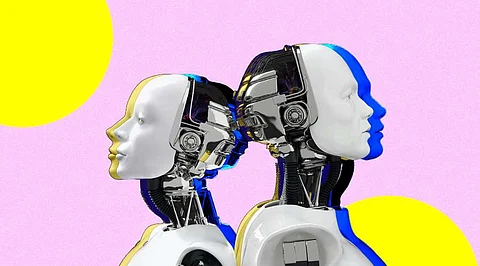

In the field of technology, the two terms are often linked together: "robot" and "artificial intelligence" (AI). Although closely related and often work together, they represent distinct fields with unique characteristics, purposes, and applications. Let's examine the key differences between these two transformative fields.
AI is a branch of computer science focusing on creating intelligent agents that mimic human cognitive functions. These functions include learning, reasoning, problem-solving, language perception, and understanding. AI algorithms and models aim to process data, recognize patterns, make decisions, and adjust based on experience.
On the other hand, robotics is the field of engineering and technology that deals with the design, construction, and operation of physical machines known as robots. These robots can range from simple single-function devices to very complex multi-function systems. While AI can power a robot's brain, robots involve the hardware and mechanics required for movement and interaction with the physical world.
AI primarily operates in the virtual realm, using software and algorithms to process data and make decisions. It doesn't require a physical presence; it can exist solely as lines of code running on computers or servers.
Robotics is inherently physical. Robots are tangible machines interacting with the real world through sensors, actuators, and manipulators. While AI can be embedded within robots to make them smarter and more adaptive, the physical component sets robotics apart.
The applications of AI are vast and span many fields. It is used in suggestion systems, natural language processing, autonomous vehicles, health diagnostics, and more. AI often powers software solutions that improve efficiency, decision-making, and automation in various industries.
Robotics are widely used in industries where physical tasks and environmental interaction are essential. This includes manufacturing (industrial robots), healthcare (surgical robots), logistics (warehouse robots), space exploration (exploration machines), and even entertainment (robot toys and cartoons). Robotics deals with tangible and mechanical problems.
AI systems can exhibit high autonomy, especially in machine learning. They can learn from data, make predictions, and adapt without human intervention. AI can be supervised (human-led) and unsupervised (self-taught).
Robots can also have varying degrees of autonomy, but their autonomy is more closely tied to their physical abilities. For example, autonomous drones can navigate a city, but they rely on sensors and onboard computers to process data and make real-time decisions to avoid obstacles.
Computer science, math, statistics, and cognitive psychology inspire AI. It is primarily a software-focused field.
Robotics is an interdisciplinary field combining mechanical engineering, electrical engineering, computer science, and more. It includes both hardware and software aspects.
Join our WhatsApp Channel to get the latest news, exclusives and videos on WhatsApp
_____________
Disclaimer: Analytics Insight does not provide financial advice or guidance. Also note that the cryptocurrencies mentioned/listed on the website could potentially be scams, i.e. designed to induce you to invest financial resources that may be lost forever and not be recoverable once investments are made. You are responsible for conducting your own research (DYOR) before making any investments. Read more here.
